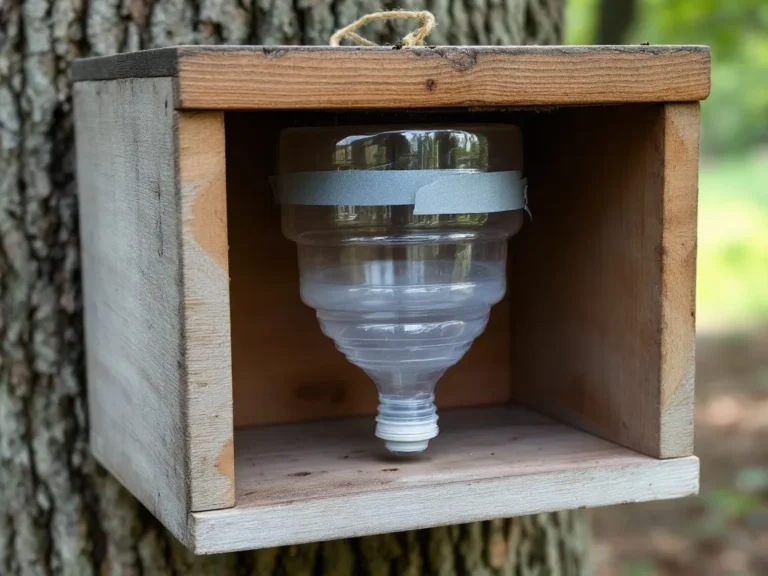Carpenter bees are notorious for burrowing into wood, causing damage to wooden structures around your home. If you’ve discovered these bees around your property, you might be searching for effective ways to eliminate them. One common household product often mentioned is WD-40. But does it actually work against carpenter bees? In this article, we’ll explore whether WD-40 is an effective solution for killing carpenter bees and examine other potential methods for dealing with these pests.
Understanding Carpenter Bees and Their Impact
Carpenter bees are large, solitary bees known for drilling holes into wood to create nests. Unlike termites, they don’t consume wood but excavate tunnels within it, which can weaken wooden structures over time. While they play a vital role in pollination, their nesting habits can cause significant damage if left unchecked.
The Potential of WD-40 as a Carpenter Bee Solution
WD-40 is a versatile product used for lubricating, cleaning, and displacing moisture. It is also occasionally suggested as a solution for various pests, including carpenter bees. Here’s how it works:
How WD-40 Affects Carpenter Bees
- Immediate Impact: WD-40 is a petroleum-based product that can suffocate insects upon contact. When sprayed directly into carpenter bee holes, it coats the bees’ bodies and disrupts their respiratory system, leading to their death.
- Residual Effect: The product can leave a residual film inside the tunnel, which might deter other bees from occupying the same hole. However, WD-40 is not specifically designed as an insecticide, so its long-term effectiveness may vary.
How to Use WD-40 Against Carpenter Bees
- Direct Application: To use WD-40 against carpenter bees, spray it directly into the entrance holes of their nests. The product should be applied generously to ensure it reaches the bees inside the tunnels.
- Seal the Holes: After using WD-40, wait until you’re sure all the bees are dead (usually within a day or two), then seal the holes with wood putty or caulk to prevent other bees from re-entering.
Effectiveness of WD-40 Compared to Other Solutions
While WD-40 can kill carpenter bees on contact, it is not a comprehensive solution for larger infestations. Here’s how it stacks up against other methods:
- Insecticidal Dust
- Long-Lasting: Insecticidal dust, specifically formulated for carpenter bees, remains effective inside the tunnels for an extended period, killing bees that come into contact with it. It’s often considered more reliable for extensive infestations.
- Application: It can be applied using a duster directly into the holes, providing a better reach into the bee’s tunnels compared to WD-40.
- Aerosol Sprays
- Ease of Use: Aerosol sprays designed for carpenter bees offer similar ease of application as WD-40 but are generally more potent. They also often come with a straw applicator, allowing for deeper penetration into the tunnels.
- Residual Effect: These sprays tend to leave a residue that continues to kill bees for some time after application, making them more effective for long-term control.
- Carpenter Bee Traps
- Preventative Measure: Traps can be an effective way to capture and reduce the population of carpenter bees around your home without the need for chemicals.
- Eco-Friendly: This method is non-toxic and safe to use around children and pets, making it a popular alternative.
Safety Considerations When Using WD-40
While WD-40 can be effective against carpenter bees, it’s important to consider safety:
- Flammability
- Highly Flammable: WD-40 is highly flammable, so it should never be used near open flames or sparks. Exercise caution when applying it in areas where this could be a risk.
- Skin and Eye Irritation
- Protective Gear: Always wear gloves and safety goggles when applying WD-40 to avoid skin and eye irritation. The product can be harmful if it comes into contact with sensitive areas.
- Environmental Impact
- Use Sparingly: While WD-40 can kill bees, it’s not an environmentally friendly option. Its use should be limited to spot treatments rather than widespread application.
Preventing Future Carpenter Bee Infestations
After dealing with carpenter bees, take steps to prevent them from returning:
- Seal Cracks and Holes
- Inspect Regularly: Regularly inspect your home’s exterior for any cracks or holes in wooden structures. Seal any openings promptly to prevent bees from nesting.
- Paint or Stain Wood
- Protective Coating: Carpenter bees are less likely to bore into painted or stained wood, so consider applying a protective coating to all exposed wood surfaces.
- Install Carpenter Bee Traps
- Proactive Prevention: Place carpenter bee traps around your property in early spring to catch bees before they establish nests.
Conclusion
WD-40 can kill carpenter bees if applied directly into their nests, but it is not the most effective or safest method available. While it offers a quick fix for minor infestations, insecticidal dust, aerosol sprays, and carpenter bee traps provide more reliable long-term solutions. After eliminating the bees, it’s crucial to take preventive measures to protect your home from future infestations.
FAQs
- Does WD-40 kill carpenter bees?
- Yes, WD-40 can kill carpenter bees on contact, but it is not the most effective or reliable method for large infestations.
- Is WD-40 safe to use around children and pets?
- While WD-40 is generally safe, it is flammable and can cause skin and eye irritation. It should be used with caution and stored out of reach of children and pets.
- How long does WD-40 remain effective against carpenter bees?
- WD-40 does not have a long-lasting residual effect. It kills bees on contact, but additional treatments or methods may be needed for complete control.
- Can I prevent carpenter bees from nesting with WD-40?
- WD-40 is not intended as a preventive treatment. To prevent carpenter bee infestations, consider sealing wood surfaces, applying paint or stain, and using carpenter bee traps.
- What’s the best alternative to WD-40 for carpenter bee control?
- Insecticidal dust and aerosol sprays specifically designed for carpenter bees are more effective alternatives, offering longer-lasting protection and better penetration into bee tunnels.





